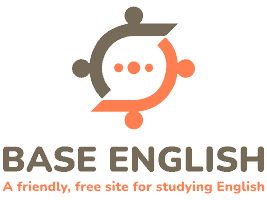
Correction is a powerful tool in learning, but one that can easily be misused. Although correcting your students is necessary if they are to become competent language users, what is intended to help can become demotivating if best practices are not followed when delivering corrective feedback. This guide is intended to explain the various types of corrective feedback and introduce principles regarding how each may be used most effectively with students.
Definition
Before going any further, let’s consider exactly what we mean by the term “corrective feedback”. For the purposes of language learning, corrective feedback is information that students receive about the linguistic errors they make in speaking or writing. There are two basic modes of feedback: oral and written. In most cases the type feedback offered by the teacher matches the mode of production. In other words, oral feedback is used to comment on oral production and written feedback is used to comment on written production. However, there are exceptions to this, especially in cases where the interaction between student and teacher is asynchronous. A teacher listening to a student’s recorded speech may choose to offer corrective feedback in written form. Likewise, a teacher may record spoken feedback on an essay or other piece of student writing.
Types of Corrective Feedback
Concerning oral corrective feedback, scholars have identified six different types that are summarized in the table below.
| Feedback Type | Definition | Example |
| Explicit Correction | Indicates an error; identifies the error, and provides the correction. | S: On May. T: Not on May, in May. We say, “It will start in May.” |
| Recast | Reformulates all or part of the incorrect word or phrase to show the correct form without explicitly identifying the error. | S: I have to find the answer on the book? T: In the book
|
| Clarification Request | Indicates that the student’s utterance was not understood and asks the student to reformulate it. | S: What do you spend with your wife? T: What? (Or, Sorry?) |
| Meta-linguistic Feedback | Gives technical linguistic information about the error without explicitly providing the correct answer. | S: There are influence person who. T: Influence is a noun |
| Elicitation | Prompts the student to self-correct by pausing, so the student can fill in the correct word or phrase. | S: This tea is very warm. T: It’s very…? S: Hot. |
| Repetition | Repeats the student’s error while highlighting the error or mistake by means of emphatic stress. | S: I will showed you. T: I will SHOWED you? S: I’ll show you. |
There is no definitive answer as to which type of corrective feedback is best for students. Different studies have produced different results. For example, one study showed that learners preferred metalinguistic feedback because it helped them to notice systematic flaws in their understanding of the target language. Another revealed that, although students saw the value of recasts, they wanted an opportunity to self-correct before being corrected by the teacher. In most of these studies the cultural background of the students emerges as a variable of interest. Different cultures have different interpretations of the role of the teacher. For example, in places where the status of teachers is high, students may be more receptive to explicit correction than in places where the relationship is more egalitarian.
In this day and age, it is not unusual for language teachers (especially those who teach online) to instruct students of various nationalities. It is possible, therefore, that a teacher may need to adjust the type of corrective feedback they offer in order to draw the best response. Don’t make the mistake of assuming that all students want or need the same thing when it comes to corrective feedback. Keep an open mind and consider trying a variety of approaches to see which combinations a particular learner responds to.
Frequency of Feedback
Perhaps as important as the type of corrective feedback is how often it is given. Most of us will be familiar with the experience of receiving a paper covered in the teacher’s red ink and remember the effect it had on our confidence. A learner, especially one who is at a stage where mistakes are common, may become discouraged if correction is made to every error. Therefore, when teaching beginners, it is best to look for patterns of errors in the student’s speech and writing. If a similar error is repeated across a wide variety of contexts, then it is worth drawing the student’s attention to.
It is important to bear in mind that a student will usually require multiple corrections on the same mistake before they are able to remove it from their speaking. It is good practice to start with recasts to model correct language use then transition to elicitation and repetition, which give the student opportunities to self-correct. Once you have confirmed that the student has truly solved the problem, then it is time to move on and tackle another.
More advanced students will make errors with considerably less frequency. As such, it may be appropriate to take time to explore those they do make fully before moving on. Students who have reached an advanced level of proficiency often possess an inherent interest in the target language and how it works. An error may be a source of interest for them, and they may ask lots of questions as they seek clarification. Such students usually prefer meta-linguistic feedback, as it shifts the focus from a discreet error to the underlying principles of how the language works.
Timing of Feedback
Another important consideration when giving corrective feedback is timing. Where speaking is concerned, immediate feedback is the most effective. However, it is also the most disruptive. As a teacher you will need to use your judgement in determining the best time to offer corrective feedback. The decision will often depend on the type of communication that is happening at the time the error occurs. I will explore this in greater detail later. For the moment, suffice it to say that the context of an error should determine how you choose to respond to it.
Immediate correction is useful in disrupting the habits and routines that lead to repeated errors. This is not only true of languages, but also music and sports. It is common for teachers and coaches to stop everything the moment they notice a problem in the person they are helping. They do this because they know that it will be easier to correct an error before it becomes entrenched by repetition. Habitual errors are most commonly observed in beginners, but, because they know little of the target language, the error has an outsized impact on their speech.
The asynchronous nature of writing means that immediate feedback on errors is rare. Corrective feedback from a teacher usually occurs after the act of writing has finished. However, when learning a language, writing tends to be process-oriented as the student is guided through various drafts, each (hopefully) an improvement on the previous one. The cycle of writing, followed by feedback, followed by more writing forms a kind of conversation between the student and the teacher. Because this conversation occurs over a much longer period than a spoken interaction, students have the opportunity to reflect on their errors.
Written corrective feedback most often takes the form of explicit correction. The student’s error is crossed out and a correction made by the teacher. Although this type of corrective feedback is the most common, it is not the only form nor the best for each situation. Another approach is for the teacher to underline or circle errors but not provide corrections. In this scenario the responsibility for grasping the error and determining how to fix it rests with the student. Of course, it may take several attempts for the student to successfully correct their errors, but the likelihood that they have learned something is considerably greater.

Activity Types
The decision of whether or not to offer corrective feedback depends to a large extent on the type of the activity the student is engaged in as well as its purpose. If an activity is intended to be communicative, then a teacher should only respond to the content of what is being said, not the form. It would be demotivating and counterproductive to interrupt a communicative task to address every error the student happens to make. However, if a student is engaged in a drill or a structured output activity where form is very much the focus, then it is essential that corrective feedback is provided each time an error occurs.
Whenever you are preparing a lesson, it is helpful to take a moment to reflect on each task and decide whether it is form-focused or meaning-focused. Students engaged in form-focused tasks should be subjected to some form of corrective. Students engaged in meaning-focused tasks should not.
Kesimpulan
As a language teacher, one of the roles you are expected to fulfill is that of the “expert”. Whatever the domain (grammar, word choice, pronunciation, idioms, etc.) you represent a figure of authority to your students. You are their primary resource, the person they can come to with any questions they have about what they are learning. For better or for worse, you are invested with the power to determine correct and incorrect uses of language in their oral and written production.
This guide has provided an introduction to the main types of corrective feedback and introduced principles for how and when they ought to be used. Please consider the points raised here as you interact with your students, whether it’s in the classroom or online. Corrective feedback is a powerful tool for helping students to improve their speaking and writing. Like any tool, though, it becomes less effective when it is misused. Try to be thoughtful in your use of correction, and remember that the importance of accuracy varies across contexts. Although your students may insist that they want to be corrected, it is up to you to determine where and when it’s in their best interests to do so.







